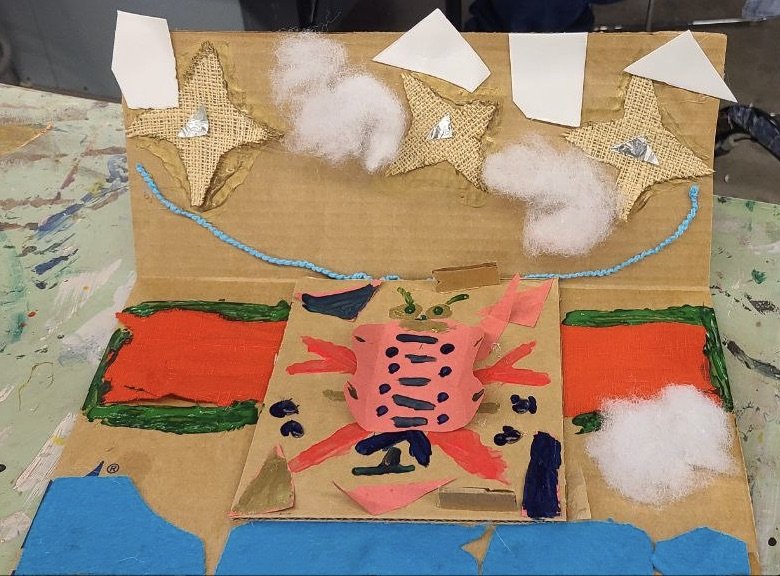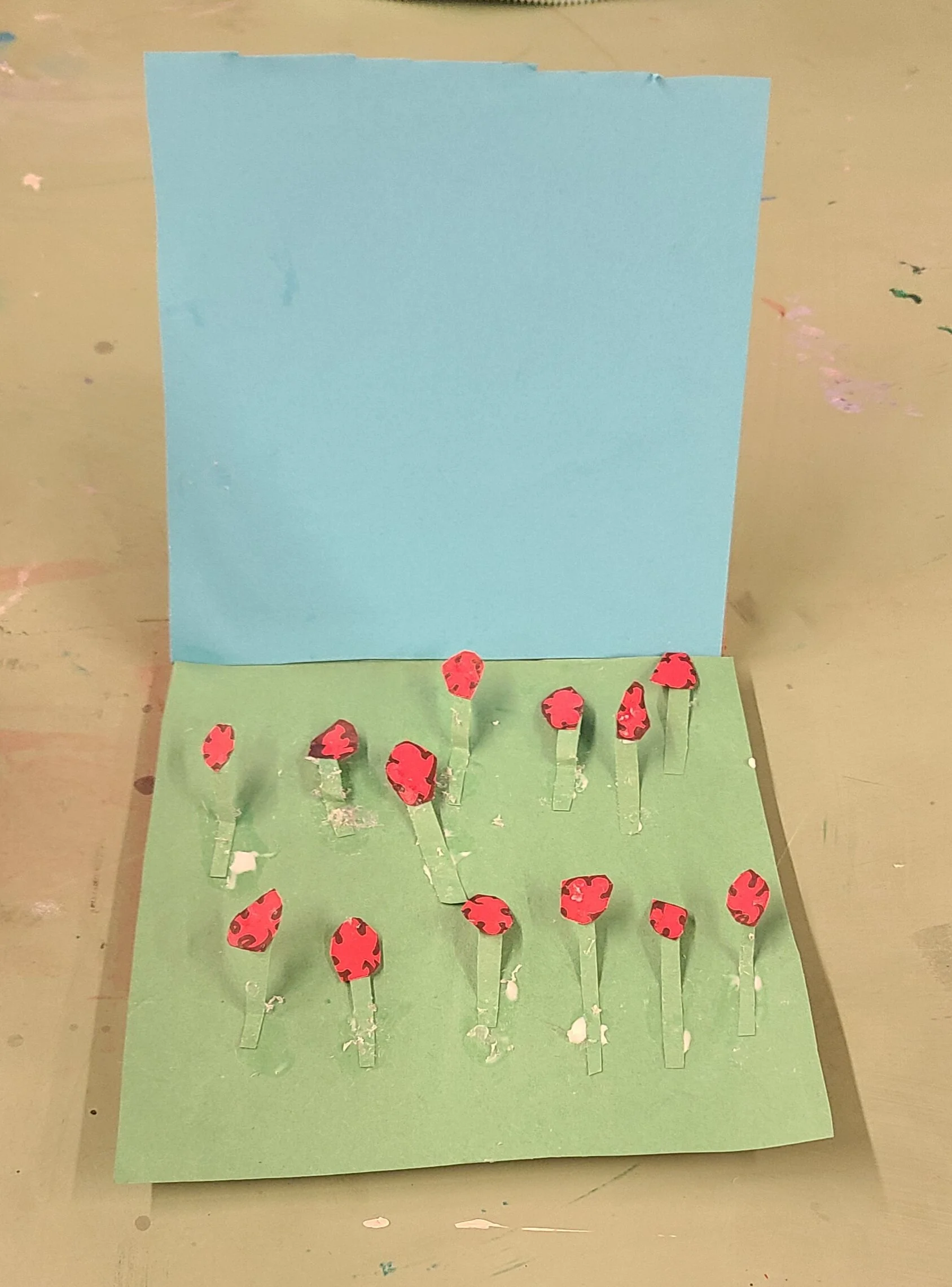Lesson Plan 2: Texture and Three-Dimensional Collage
Thursday, October 26th, 2023
Teacher: Abhi
Lesson Overview
BIG IDEA
Exploring three-dimensional art through color, texture, and shapes.
DESCRIPTION
For this lesson, students will be exploring their self-expression through color texture and shapes. Colors and textures can evoke emotions and memories and exploring rough, soft, bumpy textures could help them connect their tactile experiences with their emotions. They will also be learning about the art concept of collage as various new collage materials will be introduced in this class. This lesson builds upon the previous lesson.
ESSENTIAL UNDERSTANDING
The big idea for this project is to have students use their sensory skills such as touch using cardboard, bubble wrap, tin foil, jute fabric, Styrofoam, yarn and paper to create three-dimensional collage. This lesson will continue to go over texture to show everything we can do with it. The students will be instructed to use cardboard, bubble wrap, tin foil, jute fabric, Styrofoam, yarn and paper to cut out shapes and ripping it apart to show all its different texture to then build a landscape or abstract collage.
INTENDED OUTCOMES
1) Remember: students will remember symbolic meanings and other information related to textures colors and shapes and how to create a textured collage using that information.
2) Understand: students will understand how to connect their emotions and their sensory experiences to texture, color and shape in art making.
3) Apply: students will apply their skills to cut and compose different materials and create a collage that conveys their emotions into a tangible art piece.
4) Analyze: students will analyze oh their combination of colors textures and shapes create unique symbolism and evokes unique emotions through their pieces of work.
5) Evaluate: students will evaluate their own creative process and identify what worked and what did not work and think about areas of growth.
6) Create: students will create unique collages using color texture and shape which reflect their self-expression and interpretation of emotions shapes and colors.
7) Reflect: students will reflect on their own artistic process and others in the group see how they were able to express themselves using the prompts that were given to them.
SKILLS / TECHNIQUES
-Students will use various materials like cardboard, bubble wrap, tin foil, jute fabric, Styrofoam, yarn, folded paper, and paint to create three-dimensional art.
-Students will learn how to use hot glue guns to join different materials to create three-dimensional art
VOCABULARY
-Three-Dimensional Art
-Texture
-Landscape
-Abstract Collage
DOCUMENTATION
OVERVIEW
For this lesson, students will be exploring their self-expression through color texture, and shapes. Colors and textures can evoke emotions and memories and exploring rough, soft, bumpy textures could help them connect their tactile experiences with their emotions.
TEACHER EXAMPLE
ENGAGEMENT
We had a large group for this lesson but we're glad that we had extra materials available for everyone that showed up. They all liked the example that I had made and because of clear instructions related to multiple options that they had none of them felt like they had to make what I had showed them so seems like everybody took the main ideas from the student example and every single one of them created their own versions of a three-dimensional landscape or collage. There was a little bit of a starting issue with a few of the students but as we had enough help to engage everybody into the artistic process, we felt like every single one of them engaged as we actively kept getting them supplies and suggesting ideas if they felt stuck during the process. It was encouraging to see how a slight guidance or a little attention to what they were lacking could foster their creativity and help them take risks and create beautiful art.
WHAT WENT WELL
· Giving the students multiple sizes of cardboard and multiple options to create what day we're interested in helped them get excited about the lesson.
· Giving the students the option to either create a landscape or an abstract collage using the given materials was very helpful.
· Having six people and parents to help the students with the lesson was a huge success.
· Preparing all the material that was needed for the successful implementation of the class and having extra of everything prevented us from last minute running to find materials.
IMPROVEMENTS
· Providing glue on every table before the starting of the class would have been helpful to avoid some of the starting problem.
· Making sure that the Bluetooth speaker was charged beforehand who would have been helpful to play music as this speaker was dead when we wanted to use it.
· Giving a ten-minute warning to finish the work would have been helpful for the critique time as the teacher just gave a five minute warning.
· The critique time could look different where students who do not want to be in the spotlight could be given the option to share at their individual tables next time.




Credits
Abhi
Teacher
Trinity
Assistant Teacher
Zoe
Assistant Teacher





